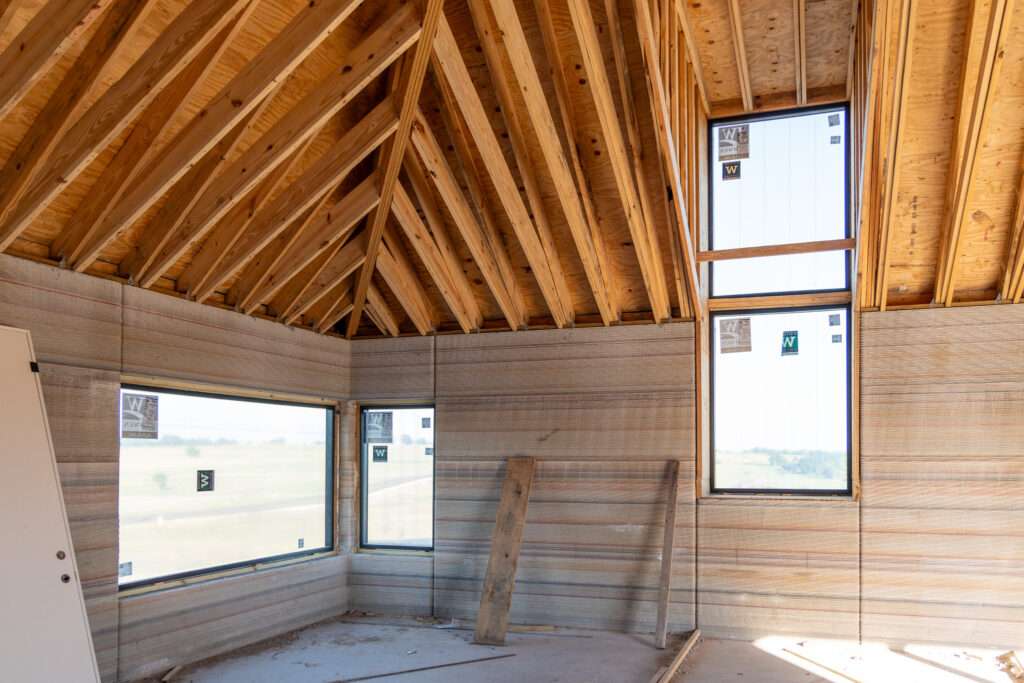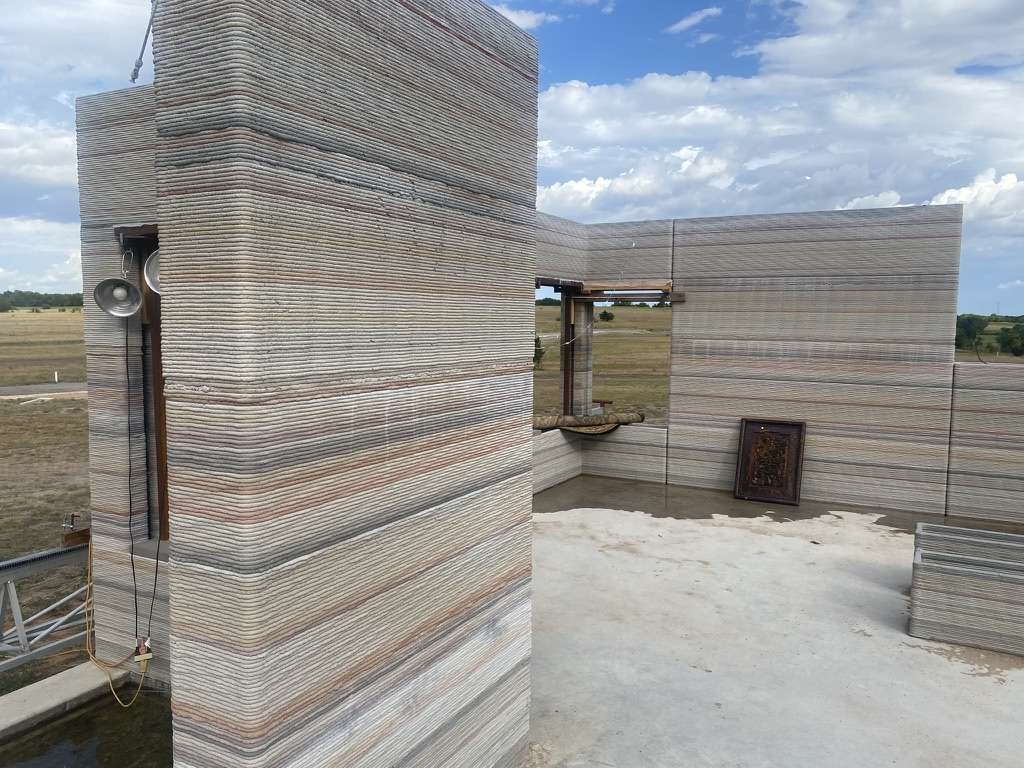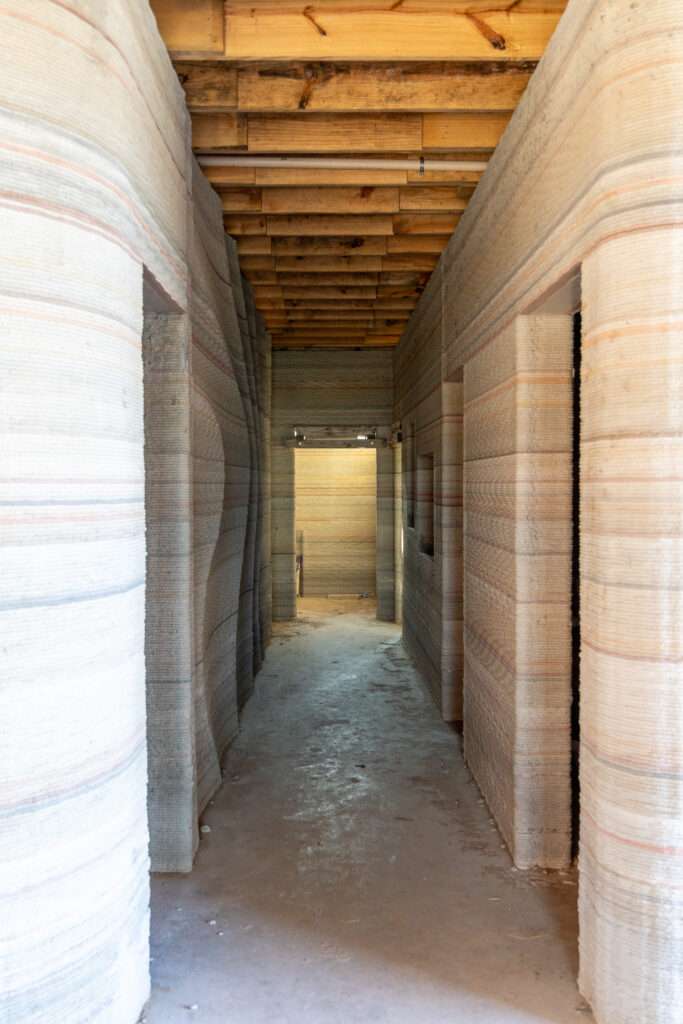A housing project in Round Top, Texas, is utilizing 3D-printing and sustainable cement for low emissions and low-cost homes.
Eco Material Technologies, the largest sustainable cementitious materials producer in North America, and Hive 3D, a leader in sustainable 3D-printed construction projects, have introduced the first 3D-printed homes using near-zero carbon cement as part of The Casitas at The Halles development in Round Top, Texas. These homes range from 400 to 900 square feet and offer studio, single-bedroom, and two-bedroom models.
The innovative houses from Hive 3D will utilize Eco Material’s longer-lasting and durable cement, known as PozzoCEM Vite, providing an eco-friendly and affordable housing solution for The Casitas at The Halles residents. In the past, Hive 3D successfully printed a 3,150 square-foot home using Eco Material’s near-zero carbon cement, called PozzoSlag, at lower replacement levels. Both PozzoCEM Vite and PozzoSlag have been proven to enhance concrete strength, impermeability, and durability with near-zero emissions.
“Traditional Portland cement is highly polluting, Grant Quasha, CEO of Eco Material Technologies, told Ethos via email. He says the cement industry accounts for 8 percent of global emissions each year. And as housing demands increase across the globe, finding long-term sustainable solutions is critical.

By utilizing Eco Material Technologies’ cement replacement products such as PozzoCem Vite or PozzoSlag, Quasha says builders can significantly reduce their carbon emissions with a product that has a similar set time as traditional products and can gain long-term strength.
According to Eco Material Technologies, PozzCEM Vite replaces 100 percent of Portland Cement with 92 percent fewer emissions. “The advanced material also sets much faster than traditional Portland cement – in 2-3 minutes in the formulation used by Hive 3D – allowing rapid printing of sustainable homes,” Quasha says.
Timothy Lankau, CEO of Hive 3D, says the novel approach to home building makes low-cost housing a reality. He says an internal analysis found the 3D building process can save 30 to 40 percent in costs compared with traditional methods. “These savings can then be passed on to the buyer or developer,” Lankau says. “Additionally, the cement mixture provided by Eco Material Technologies, as well as a proprietary cement foam mixture used to insulate the homes, makes this project unique to other 3D-printed home builders.”
The process begins with a foundation, from there the 3D printer prints the walls and structure, leaving space for things like windows, plumbing, and electrical. Lankau says the printer is able to print the home in approximately 3-5 days. “Once printing is complete, the house will be completely finished and move-in ready in approximately 2 months, once the team can complete things like plumbing and electrical.”

“In addition to sustainability goals, the cement mixture has also been proven to enhance the strength, impermeability, and durability of concrete with near-zero emissions,” Quasha says. For each ton of Portland cement replaced with Eco’s products — approximately one ton of CO2 emissions are avoided.
Eco Material Technologies’ products have been certified by organizations including the Texas Department of Transportation and the FAA, among others. The company maintains stringent quality controls and lab testing for all products produced on a daily and per-shipment basis.
Its PozzoCEM Vite and Pozzoslag have proven in projects across the country to be equal to or greater than traditional cement, and in most cases, becoming significantly stronger over time and are more resistant to the things that can cause concrete to fail — like chlorides and sulfides, Quasha says.
Eco Material Technologies’ PozzoSlag can replace 50 of Portland cement in concrete and has been used in Texas roads and bridges for more than a decade, Quasha says. Over the past decade, Eco Material Technologies has sold approximately one million tons of its Green Cement products.

3D-printed homes are expected to boom by 2030, according to recent data from Grand View Research. It anticipates a CAGR of nearly 102 percent between 2023 and 2030.
While demand for cheaper housing is on the rise, Grand View says the spike is also due to the rise in the adoption of green projects globally. “Building construction businesses are increasingly using additive manufacturing and green construction methods to reduce costs and build energy-efficient buildings.”
Data from the World Green Building Trends Survey 2021, found that around 42 percent of businesses would be using green technology in 60 percent or more of their building projects by 2024.
Besides the environmental benefits, Hive 3D and Eco Materials have collaborated to create a system that mixes Eco Material’s cement replacement products with locally-sourced aggregates on-site, significantly reducing production costs for printable materials. This cost-effective approach allows Hive 3D to construct houses at a fraction of the expense compared to traditional methods.
Quasha says the goal at Eco Material Technologies is to transform byproducts and natural minerals into sustainable products that eliminate the greenhouse gas emissions from cement while making it stronger and more durable. “The current status quo in cement manufacturing is unsustainable for our planet,” he says, “and as a leader in sustainable cementitious materials, we’re excited to help companies make their products both stronger and greener.”
Related on Ethos:


